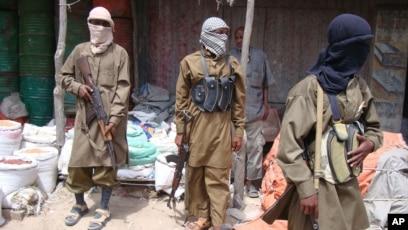Al-ShababS Tactics: Deceptive Uniforms and Strategic Attacks on Prisons
In a bold display of strategy and deception, Al-Shabab militants have employed tactics that blur the lines between friend and foe. Dressed in uniforms resembling those of the Somali National Army, the insurgents managed to infiltrate the defenses of a high-security prison, taking advantage of the chaos generated by their disguise. Eyewitnesses reported that the attackers, appearing to be legitimate soldiers, quickly gained the trust of unsuspecting guards before launching their assault. This tactic not only showcases the militants’ ability to exploit the element of surprise but also highlights the ongoing challenges faced by security forces in identifying and responding to threats that masquerade as part of their own ranks.
The operation was meticulously executed,demonstrating a level of planning characteristic of Al-Shabab’s recent assaults. Key elements of their strategy included:
- Coordinated strikes: Multiple teams engaged simultaneously to overwhelm prison defenses.
- Intelligence gathering: Prior knowledge of the jail’s layout and timing allowed for a more effective breach.
- Psychological warfare: The use of military attire created confusion and fear among both inmates and guards.
As the dust settled, the aftermath of the attack revealed a deeper narrative about the insurgents’ capabilities and objectives. By focusing on strategic targets like prisons, Al-Shabab aims not only to free imprisoned members but also to instill fear within the broader Somali population and disrupt governmental authority.

The Impact of Increased Insecurity on Somali Civilian Life and Governance
The recent brazen assault on a Somali prison by militants disguised as soldiers has starkly highlighted the deteriorating security situation in the region and its pervasive effects on civilian life and governance. As Al-Shabab exploits the chaos to further its agenda, ordinary citizens find themselves trapped in a cycle of fear and uncertainty.Daily routines are interrupted by a pervasive sense of danger,leading to a decline in community engagement and an erosion of trust in local authorities. Families now face heightened anxiety, with manny grappling to protect their loved ones amidst threats from both insurgents and a government struggling to maintain control.
The implications for governance are equally alarming.as the legitimacy of the government is undermined by such violent incursions, several key challenges have emerged:
- Loss of Authority: The ability of government forces to protect citizens is increasingly questioned, leading to waning public support.
- Displacement and Migration: Fearful of violence, many are fleeing their homes, exacerbating internal displacement issues and straining humanitarian resources.
- Increased Radicalization: The ongoing violence provides fertile ground for radical ideologies to spread,as disenfranchised youth seek alternatives to ineffective governance.
This cycle of insecurity threatens to reverse any progress made in stabilization efforts, placing the future of Somalia’s governance and its people in peril.

Strengthening security Measures: Recommendations for Protecting Critical Facilities
Considering the recent assault on a Somali jail by Al-Shabab militants disguised as soldiers,it is indeed imperative for security officials and facility managers to reevaluate their protective strategies. Encounters like these highlight the vulnerabilities inherent in current security protocols and the pressing need for more robust measures. A multi-faceted approach should be adopted, focusing on both personnel training and technological enhancements. By fostering an environment of vigilance and preparedness, facilities can better safeguard their assets and personnel.
Key recommendations include:
- Enhanced Personnel training: Regular training sessions to ensure that all staff can recognize suspicious behavior and understand emergency protocols.
- Integrated Security Solutions: Utilizing a combination of surveillance cameras, access controls, and alarm systems that work together for a more extensive security network.
- Collaboration with Local Law Enforcement: Establishing direct dialog channels with police and military units for rapid response in case of an incident.
- Regular Security Audits: performing thorough assessments of current security measures to identify and rectify weaknesses before they can be exploited.
By implementing these strategies, critical facilities can significantly reduce the potential for successful attacks and ensure the safety of individuals within their premises.

Regional Cooperation: The Role of International Support in Countering Al-Shabab Threats
The recent assault on a Somali jail by Al-Shabab militants, who ingeniously infiltrated the facility by disguising themselves as soldiers, underscores the pressing need for robust regional cooperation and international assistance to combat such threats. As the group continues to demonstrate its operational adaptability and tactical ingenuity, the response must involve a concerted effort among regional actors, supported by global partners, to mitigate the risk posed not only to Somalia but to neighboring countries as well. Initiatives that promote intelligence sharing, strategic military training, and capacity-building among national forces are essential to enhance the overall security landscape in the Horn of Africa.
In this context, the role of international support is vital. The following strategies can amplify regional efforts in countering Al-Shabab’s influence:
- Intelligence Collaboration: Countries must share intelligence and enhance surveillance capabilities to anticipate and thwart attacks.
- Military Training Programs: International partners can provide specialized training to Somali forces, helping them to effectively respond to asymmetric threats.
- economic Growth Aid: Addressing the root causes of extremism through economic initiatives can weaken the recruitment base of Al-Shabab.
- Humanitarian Assistance: supporting displaced populations can restore stability and reduce the vulnerability of communities to extremist ideologies.
